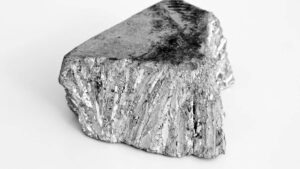Lead and zinc are back in fashion for investors

Often seen as unfashionable could lead and zinc be due for a revival: Getty Images
Like flared trousers and kipper ties, lead and zinc are sometimes seen as less fashionable than other metals. But now markets for these two base metals have been inundated with investor fund money riding their price recovery.
Prices for both metals have bounced back from their mid-March slump — zinc performing better than lead.
Lead is still to recapture its January 2020 high of just over $US2,000/tonne ($2,775/tonne) and was trading at $US1,921/tonne on the London Metal Exchange at the end of last week.
Zinc is back above $US2,200/tonne for the first time since January 2020, trading at just under $US2,400/tonne.
Gavin Wendt, founding director and senior resource analyst at Minelife, said investment funds were flowing back into lead and zinc markets.
“As a result of commodities recovering from their COVID-19 lows and erasing their losses for the year, we are starting to see investors and speculators look for other opportunities. Speculative money is moving into commodities like zinc,” he said.
He called the flow of investor funds into commodities like lead and zinc a self-fulfilling prophecy, as additional funds could result in further upside to metals prices.
The base metals — often found together in the same mineral deposits — are important to a wide range of industries and applications.
Lead is used in ammunition, batteries, ceramics and glass, household plumbing and weights; while zinc is used in anti-corrosion alloys, brass, cosmetics, glues and pharmaceuticals.
Lead and zinc are also components in batteries, though their use is being superseded by lithium-ion in electric vehicles.
COVID-19 upsets lead and zinc markets
Lead and zinc moved from a finely balanced position towards a surplus in Q1 2020, according to the International Lead and Zinc Study Group (ILZSG).
“If you look at the demand and supply fundamentals of a commodity like zinc, they are not encouraging,” Wendt said.
While post-COVID economic stimulus by China has been driving demand for industrial metals, including lead and zinc, buying from the rest of the world has been weak, he noted.
Lead’s market was showing a surplus of 19,000 tonnes for refined metal, the ILZSG said.
Zinc had a larger surplus of 239,000 tonnes due to a surge in Chinese production.
The pandemic is estimated to have held back 146,000 tonnes of lead and 635,000 tonnes of zinc from global markets in the March-May period, according to the latest available data.
And COVID has resulted in cutbacks in refining capacity of 106,000t for lead and 113,000t for zinc.
Australian lead and zinc mines unscathed
ILZSG said Australia’s lead and zinc industry had largely avoided any detrimental impact on production from the coronavirus crisis.
“Analysts cite border closures, shipping restrictions, the proximity often required by workers in mines and the need to protect the health of Aboriginal communities as major challenges being faced by the lead and zinc industry in Australia due to the COVID-19 pandemic,” the group said.
Demand for lead and zinc, particularly in the automotive sector – a major user of lead batteries and zinc-galvanised steel – has slumped in recent months.
China is a major customer for lead and zinc in-concentrate exports, with its smelters and refiners only operating at 80 per cent capacity.
“Top zinc concentrate exporting countries Peru, Mexico and Bolivia have all enforced strict and lasting measures to prevent the spread of the coronavirus, leaving China short of supply at a time when demand is starting to come back,” ILZSG said.
There are a number of ASX-listed lead and zinc companies with projects in Australia and around the world.
Australia and Ireland: Prime hunting ground
In July, Galena Mining (ASX:G1A) secured $US110m in debt facilities from Taurus Funds Management to develop its Abra silver-lead project in WA’s Gascoyne region.
“The $US110m of debt funding, together with the final $60m investment to be received from Toho Zinc [Galena’s project partner] on implementation of the facilities provides an efficient and fulsome funding package to bring the outstanding Abra base and precious metals project to fruition in a way that provides robust shareholder returns,” managing director Alex Molyneux said.
After raising $3m in a share placement to Australian institutions and professional investors, Red Metal (ASX:RDM) is advancing drilling at its Queensland zinc-lead-silver projects.
The company has a ‘greenfields discovery alliance’ with OZ Minerals (ASX:OZL) to fund proof-of-concept work at its Yarrie, Gulf, Three Ways, Lawn Hill and Mount Skipper projects.
OZ Minerals can earn a 51 per cent stake in the Mount Skipper project. Recent assays included a 1 metre sample at 1,140 parts per million (ppm) zinc, 700ppm lead and 525ppm copper.
Zinc of Ireland (ASX: ZMI), meanwhile, has intersected broad zones of lead-zinc mineralisation at its Kildare project in Ireland.
Italy, Mexico and Spain: Also zinc exploration hotspots
Alta Zinc’s (ASX:AZI) ambition is to become a long-term supplier of lead and zinc concentrates in Western Europe through its Gorno and Pian Bracca projects in Italy.
The company has discovered thick, stacked mineralised lenses at its Pian Bracca project with intersections like 12.1m at 19.4 per cent zinc and lead, and high-grade channel samples along-strike at its Ponente project.
Production at its northern Italy sites is expected to start in early 2024. Alta’s exploration licence for Gorno was renewed for three years with the option to renew for three more.
Alta Zinc said long-term forecasts for zinc prices were around $US2,500/tonne from 2024.
Only 30 per cent of the world’s zinc mines are economic at a price of $US2,000/tonne, according to the company.
Consolidated Zinc (ASX:CZL) gained environmental approval for a refurbishment of the processing plant and a tailings storage facility at its Plomosas mine in Mexico in July.
The Plomosas silver-lead-zinc mine produces at a rate of 155 tonnes per day and has an indicated mineral resource of 127,000 tonnes for zinc and 34,000 tonnes for lead.
Meanwhile, drilling at Variscan Mines’ (ASX:VAR) Novales-Udias zinc project in Spain has yielded high-grade intercepts of 2.2m at 36.15 per cent zinc from 21.8m.
“We have re-booted and kick-started fieldwork quickly once COVID-19 restrictions were lifted,” managing director and chief executive Stewart Dickson said.
The company has compiled a dataset of 39,000m of surface and underground historic drilling at the San Jose-Novales mine to potentially define a mineral resource estimate.
Related Topics
UNLOCK INSIGHTS
Discover the untold stories of emerging ASX stocks.
Daily news and expert analysis, it's free to subscribe.
By proceeding, you confirm you understand that we handle personal information in accordance with our Privacy Policy.








